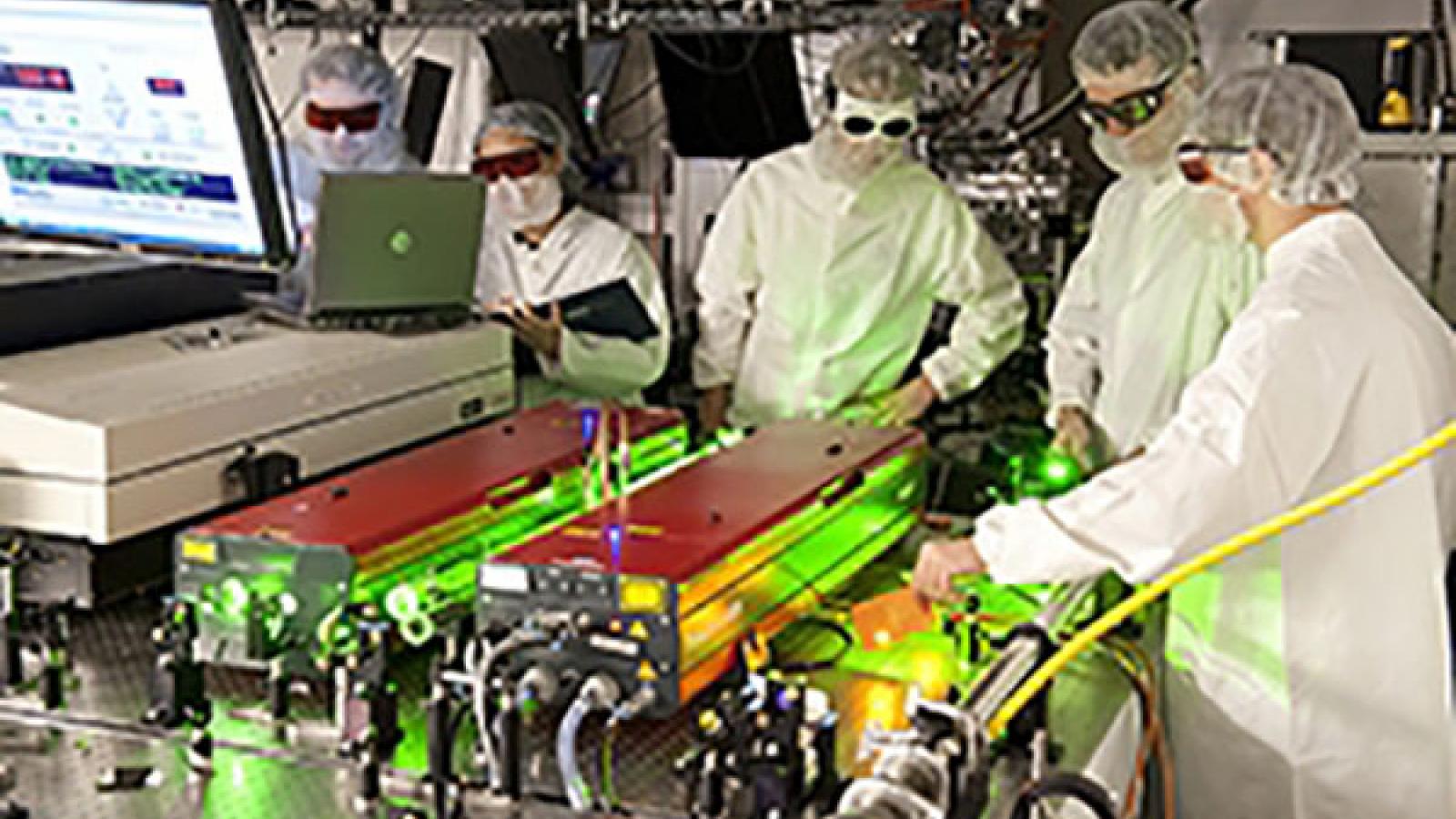

We have designed the graduate program in physics to give you a solid background in the fundamentals, an understanding of the major fields of current research and an opportunity for in-depth investigations. Working with your faculty advisor, you can tailor your program to meet your own needs and interests, taking into account your particular goals and undergraduate preparation.
In the PhD program, you will devote most of your first year and some of your second year to course work. These courses are designed to strengthen and extend your knowledge of the theoretical foundations of physics and to introduce you to areas of current interest in the field. During the summer following your first year, you will be encouraged to join one of the ongoing research programs in the department. As mentioned earlier, teaching associates with satisfactory records are offered special summer-term appointments, free of teaching duties, to enable them to take advantage of this opportunity to explore a research area early in their graduate careers.
From your third year on, you will concentrate on carrying out your PhD thesis research with your faculty research advisor. This work culminates in your PhD thesis defense by about the fifth or sixth year.
The resources of the university and of the physics department are available to assist you with job placement after graduation. Recent graduates now have successful careers at colleges, universities, national research laboratories and in industry.
The first step in becoming a PhD candidate is to qualify via the “core-course requirement.” This is accomplished by taking the six semesters of core courses shown earlier in the course sequence box and achieving at least a B+ average in these courses. Students coming into our program with previous graduate-level course experience may petition to waive some or all of these courses.
After satisfying the core-course requirement, research becomes the center of your PhD program. After working for one or two semesters with your advisor, you will prepare for the candidacy examination. This exam is set by your advisor and advisory committee. It consists of a short paper on a topic related to your research project. Admission to PhD candidacy follows the satisfactory performance on the candidacy examination.
The PhD program concludes with a written dissertation, based upon the scientific advances you made through independent research, and an oral defense of your thesis. The average time for completion of the PhD program is about six years.
An important aspect of physics is interaction with other physicists. The Department of Physics at Ohio State encourages advanced students to attend national conferences. It is common for students to present three to four papers at conferences before completing their PhD. The annual Smith Lecture brings internationally recognized physicists—typically Nobel Prize winners—to the department every spring. The weekly colloquia feature easily accessible insight into cutting-edge research in all fields of physics. In addition, each research group also invites collaborators and recognized researchers to present findings in their fields.
Our students publish an average of five papers by the time they graduate, a testimonial to the quality and depth of training they receive. When they graduate, our students are highly competitive in the job market and find employment in many careers, including academics, national research laboratories, teaching, scientific policies and procedure and in industry.
You may contact members of the faculty individually and arrange to meet them if you come to the department for a visit. We appreciate the important role graduate students play in research and are always happy to discuss your needs and concerns.
Diversity of active research areas is one of the great strengths of the Department of Physics at Ohio State. Research spans the entire spectrum of matter, including high energy physics, nuclear physics, atomic and molecular physics, condensed matter physics, biophysics and astrophysics. Research in physics education is another strong, vibrant field at Ohio State. With recent hires and new center funding, we are especially strong in condensed matter physics, high energy physics, nuclear physics, biophysics, astrophysics, AMO, cold atom theory and physics education research. You will find details of the different research groups on the "Research in the Department" page